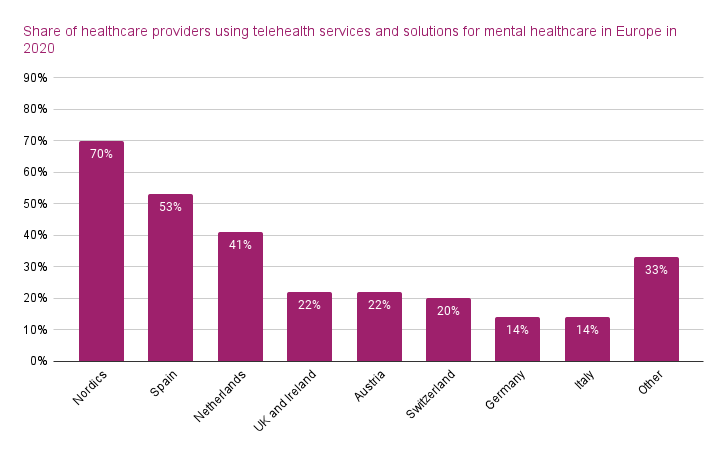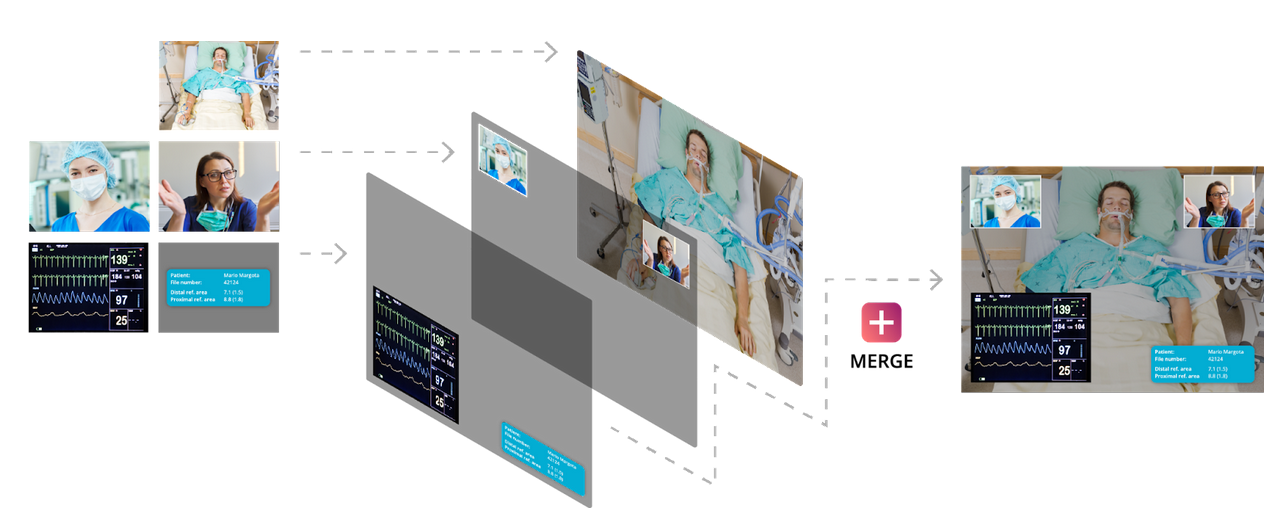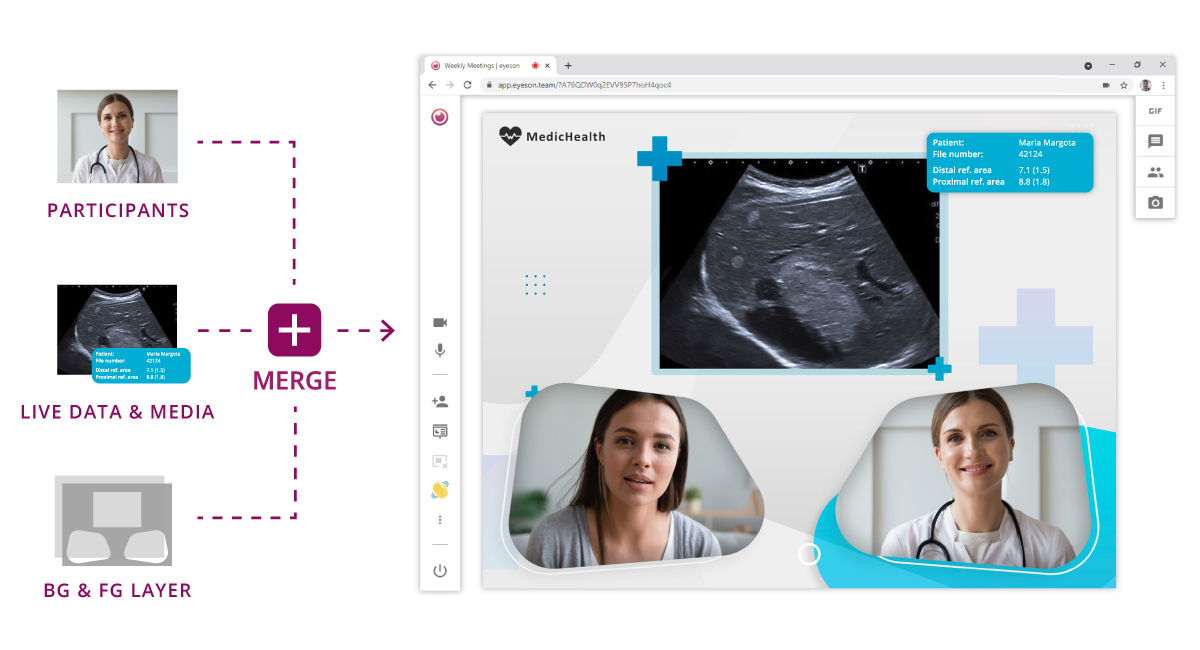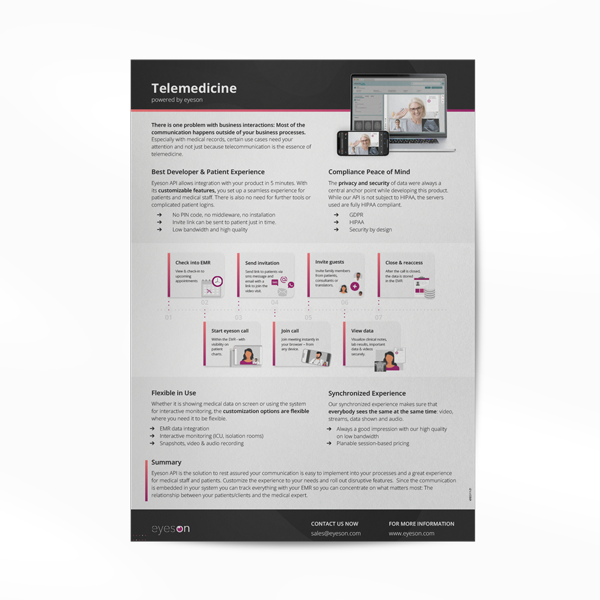
The Future of Telemedicine is Now!
What is telemedicine?
Telemedicine is the use of computer and telecommunication technologies for the exchange of medical information. Telemedicine includes consultations with doctors using real-time telecommunication: telephones, mobile communications, and the Internet without a visit to a medical facility.
The first country to put telemedicine on a practical footing was Norway, where there are a large number of places that are difficult to access for traditional medical care. The second project was carried out in France for sailors of the civil and military fleets.
The Covid-19 pandemic has given a major impetus to the development of new methods of diagnosis and treatment. Over the past two years, the popularity of online medical services and telehealth has increased significantly. The quarantine regime caused by the coronavirus pandemic has shown how useful and effective remote services can be.
Telemedicine today
The telehealth market was evaluated at $49.9 billion in 2019 and has skyrocketed since then. This is due to the booming technological innovations and of course the pandemic, which has changed the whole healthcare industry. By 2023, the telehealth market is estimated to reach $101.15 billion, and an, even more, impressive $455.3 billion by 2030.
The US remains to be one of the leading regions for telemedicine development. Europe is also experiencing a new telemedicine era: 71% of Italian healthcare providers use telemedicine; in Nordic countries, this number reaches 55%, and 54% in Austria. There is no need to say that telemedicine will continue its growth, supported by the leading software developers.

Source: HIMMSS e-Health Trendbarometer on Telehealth Adoption
Some statistics:
- 90% of the leading healthcare companies are developing or implementing telemedicine technology
- 35% of employers with on-site health facilities offer telemedicine services and another 12% plan to do so in the next two years
- 91% of the health outcomes were as good or better via telehealth
- 74% of patients are comfortable with communicating with their doctors using technology instead of seeing them in person
- 74% of patients in the U.S. said they would use telemedicine services
Telemedicine is rapidly transforming the field of healthcare and is expected to become the most accepted and used method for diagnosing diseases and prescribing medicines in the next few years. An enhanced selection of the EMR (electronic medical record) and EHR (electronic healthcare records) is a significant driver for market development.
Main consumers: Who benefits most from telemedicine?
Telemedicine is not meant to replace in-person, face-to-face care. But it can be a good option for many types of care. These include:
- remote monitoring
- regular check-ups for ongoing or recurring health conditions
- treatment of infectious conditions, like a cold, flu, or COVID-19
- treatment of minor conditions, like a cough, allergies, minor back pain, sprains, or strains
- dermatology appointments for the treatment of skin conditions
- mental health care services, including therapy, medication management, and counseling
- monitoring a new medication, you may have started taking
- telenursing
- conversations about results from tests your doctor ordered
- surgery follow-up in telerehabilitation
- consultations with a specialist (for example in teleneurology)

The use of telemedicine is not limited to these services, however.
Some of the biggest reasons patients are embracing telehealth include convenience, quick access to care, and protection from being exposed to other illnesses. These types of benefits are hard to ignore, leading many experts to predict that patients will continue to turn to virtual care options well into the future.
Insurers are also seeing the benefits of telehealth. Even some of the more prominent health insurance companies, like Aetna and United Healthcare, have introduced virtual primary care plans, giving patients a convenient and affordable way to access preventive and primary healthcare. The success of telehealth is expected to continue to push insurers and providers away from the once popular fee-for-service model and more toward a value-based care model.
Key Telemedicine future trends to know
Investing in technology.
The biggest future trend in telemedicine is investing in technology. Clinics, hospitals, and pharmacies are ready to spend more on telehealth development, but the situation will change shortly. The budgets are growing, as well as customer expectations are increasing. If you plan to actively use telemedicine, be ready to invest in the newest technologies.
Integration.
The key requirement for quality telemedicine and telehealth software systems is their seamless integration with existing EMR (Electronic Medical Record) and PM (practice management) systems, proper documentation of telemedicine visits, synchronization of insurance programs, integration with patient portals, medical APIs, revenue cycle management platforms, etc. All of the above are critical to providing healthcare providers with better technology and patients with convenient care. Some telemedicine platforms are built directly to “communicate” with mobile medical devices.
Freedom of choice and mobility.

A client should have the option to visit any hospital, doctor, or pharmacy and get the same level of service. For the healthcare industry, it’s vitally important to track and control all information, from the latest treatments to operations and diseases.
Integrated data sharing allows the collection of this information and makes it available for all hospitals and clinics. Therefore, a customer does not need to provide this data every time they have an appointment with a new doctor.
Data protection through cybersecurity.
With more patient meetings via video chat, there is an increased risk of giving information away on an insecure network or even hacking. In either case, private patient information could be leaked. Healthcare providers will have to prioritize cybersecurity to keep patient records protected.
Virtual healthcare or telemedicine uses technology to enable patient-physician interaction, deliver care and facilitate services without the need to visit in person. As the capabilities and popularity of virtual healthcare services increase, healthcare organizations would need to continue investing in processes to ensure data security and identify and mitigate risks.
eyeson and Single Stream Technology
All four of these tasks are solved by eyeson’s patented video technology. The uniqueness of the solution lies in the fact that it combines all video and audio streams between users, as well as all additional medical information in any format, synchronizing it into one single common video stream in the cloud. As a result, all participants see and hear exactly the same thing at the same time, unlike standard video streams where a lot depends on connection quality.

Synchronizing the communication with data allows you to integrate it into the ERM and work with it further. This not only includes search but also applying machine learning for further sense-making.
Thus, the video stream is no longer just a tool for momentary communication between a doctor and a patient, but a valuable source of information for further analysis and use in various situations, both for direct medical tasks and for insurance companies, tasks of optimizing work with clients, analyzing efficiency, and so on.
In synchronized form, the information is already easily available for later use when the patient contacts any other doctor or clinic in the world, thus answering the second challenge to telemedicine solutions, when the patient can go to any other doctor, clinic, or pharmacist and receive the same high level of service based on the information already collected and processed earlier.
eyeson technology also allows setting new high standards in the fourth trend of modern telemedicine - data security. Available only for the exact time of a video session - closing the meeting terminates the temporary cloud server & deleting online data. The combination of this technology, together with complete cloud independence up to private clouds, and even premised solutions, allows us to provide the highest level of protection for personal medical data.

The new revolutionary solution has already been implemented, integrated with the Epic EMR, and is successfully operating in one of the largest US hospitals with 20,000 employees. Hospital representatives believe that “eyeson has a disruptive video technology which has allowed us to bring health care and telemedicine to the next level. Based on our review of competing platforms, we believe that our projects are the most innovative in the USA and will disrupt the future of remote patient care in the next few years together with eyeson.”
Technologies such as eyeson’s solution are the future, as they GIVE YOUR COMMUNICATION MEANING and allow you to take the most important step towards the globalization of telemedicine services and their availability to all patients, no matter where they are.

